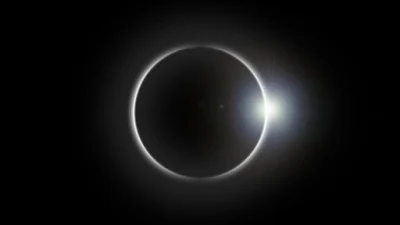As we all know that both the Earth and the Moon get light, ie energy, from the Sun. Due to the same rotation speed of both the Earth and the Moon, only one part of the Moon is visible from the Earth.
When the Sun, the Moon and the Earth are in a straight line, then a solar eclipse or a lunar eclipse occurs. Total solar eclipses are often seen but total lunar eclipses are not often seen. There can be a maximum of seven eclipses (solar eclipse and lunar eclipse) in a year. Out of which solar eclipse can happen at least twice and maximum five times.
Full Moon ( पूर्णिमा )
When the entire illuminated part of the moon is visible from the earth, it is called a full moon. This phenomenon happens only once in a month. That is, on this day the entire illuminated part of the moon is in front of the earth.
New Moon ( अमावस्या )
Unlike the full moon, when the entire unlit part of the moon is visible from the earth, it is called Amavasya. This phenomenon also happens only once in a month. That is, on this day the entire unlit part of the moon is in front of the earth.
Ashoka's Dhamma : Subjects Mentionedin Pillar Edicts1. Solar Eclipse : How and when?
Partial Solar Eclipse
Diamond Ring
2. Lunar Eclipse : How and when?
Few Questions and Answers
- Question: According to the above description, there should be a lunar eclipse on every full moon and a solar eclipse on every new moon, but this does not happen. Why ?
- Answer : The rotation speed and orbital path of the Moon and the Earth are the same, but the Moon is inclined to its axis by 5 degrees, due to which when the Moon and the Earth reach the same point of rotation, at that time the Moon moves a little further due to its axial tilt. goes For this reason, lunar eclipse and solar eclipse do not occur on every full moon and new moon.
- Question: Total solar eclipses are observed but total lunar eclipses are not observed, why?
- Answer : Due to the substantial difference in the size of the Sun, Moon and Earth, total solar eclipses are observed, but total lunar eclipses are not observed.
- Question : Solar eclipse should not be seen with bare or naked eyes, why?
- Answer : At the time of a solar eclipse, the Moon comes between the Sun and the Earth. In this state, ultraviolet rays emerge from the peripheral regions of the Sun, which are harmful to the eyes. During a total solar eclipse, a diamond ring is formed around the Sun. This emits a large amount of ultraviolet rays.



Comments
Post a Comment